
 +51 984 673 124
|
+51 984 673 124
|  +51 984 652 232
| [email protected]
+51 984 652 232
| [email protected]
"So much more, than you were looking for !!! "
Direct operator & locally owned.Sustainable, responsible & ethical tours.
Menu
Tours & Destinations
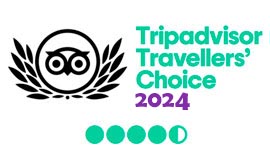
Tours / Programs
Manu National Park
Biosphere Reserve & Jungle Tours Official Operator - 1990 World Natural Heritage - UNESCO
If you have any queries
Permits, Packages & Tours:
SKYPE US:
CALL US: GMT -5 hour
Office Phone: +51 84 256324
+ 51 984 673124 (24/7)
+ 51 984 652232
GMT +8 hour
Australia: +61 480 157471
Peru/Cusco Office Open Hours
Mon-Sat: 8am-7pm

Highly Recommended by:
- South American Handbook (Footprint)
- Lonely Planet Peru Guide
- South America on a Shoestring (Lonely Planet)
- Peru Handbook (latest edition)
- Cusco & the Inca Trail Handbook
- The Inca Trail Cusco & Machu Picchu(Trailblazer),
- Moon Handbooks Peru (latest edition),
- Andean Travel Web Guide to Peru
- South American Explorers Club.
- Awarded Best Cusco Travel Agency by the Ministry of Tourism.
The 4 day Lares trek has been the experience of a lifetime. Isaac has been an absolutely fantastic guide in every way. His enthusiasm and passion for the trek really made the experience for me. I loved his guided tour of Machupicchu and feel like I have a much beter understanding of Peruvian history.The porters and chefs were a fantastic team. It was a real pleasure to take part in the trek.
Thank you so much SAS !!!
Anna Jarvis (England UK)
You are here: useful info
Peru
Capital Lima. Population: 8.5 million (2007).
Area 1,285,220 sq km (496,225 sq miles).
Population 30 million The population of the country is largely Indian and Mestizo
Time GMT - 5.
Government Republic.
Gained independence from Spain in 1824, having declared it in 1821.
President Alan Garcia since 2006.
Religion 81% Roman Catholic, 2.7% other denominations, 16.3% unspecified or none.
Language:
Although the majority of city and town dwellers speak Spanish, Qechua is spoken in most mountain areas and Aymara /Spanish on the Lake titicaca Islands.
many people in City tourism areas speak English.
Electricity
220 volts AC, 60Hz. (110 volts AC is available in most 4- and 5-star hotels.)
Peru is a large, mountainous country on the Pacific coast of South America that borders Ecuador and Colombia to the north, Brazil and Bolivia to the east, and Chile to the south. The Pacific Ocean lies to the west.
There are three natural zones:
The Costal region, which contains Lima (the capital), is a narrow coastal plain consisting of large tracts of desert broken by fertile valleys. The cotton, sugar and rice plantations and most of the so-far exploited oil fields lie in this area, as does the majority of the population.
The highland Sierra contains the Andes, with peaks over 6,000m (20,000ft), most of the country's mineral resources (silver, zinc, lead, copper and gold) and the greater part of its livestock.
The Selva, an area of fertile, subtropical land, lies between the Andes and the borders with Brazil, Bolivia, Colombia and Ecuador. The Amazonian jungle has vast natural resources. The absence of land communications, however, left the area largely uncharted until full-scale oil exploration began in 1973. Even today roads barely penetrate the region.
Climate
Varies according to area. On the coast winter lasts from June to September. During this period, the mountainous areas are often sunny during the day but cold at night. This is high tourist season and the best time to visit most regions. Heavy rains in the mountains and jungle last from December to April. It hardly ever rains in Lima nor most of the coast, except for Tumbes and Piura, which have tropical climates.
CUSCO information specific to Cusco
Altitude sickness, also known as acute mountain sickness (AMS), altitude illness, hypobaropathy, or Soroche, is a pathological effect of high altitude on humans, caused by acute exposure to low partial pressure of oxigen at high altitude. It commonly occurs above 2,400 metres (approximately 8,000 feet). Acute mountain sickness can progress to high altitude pulmonary edema (HAPE) or high altitude cerebral edema (HACE).The causes of altitude sickness are not fully understood. The percentage of oxygen in air remains essentially constant with altitude at 21% up until 70,000 feet (21,330 m), but the air pressure (and therefore the number of oxygen molecules) drops as altitude increases — consequently, the available amount of oxygen to sustain mental and physical alertness decreases above 10,000 feet (3,050m). Altitude sickness usually does not affect persons traveling in aircraft because the cabin altitude in modern passenger aircraft is kept to 8,000 feet (2,440 m) or lower. A superficially related condition is chronic mountain sickness, also known as Monge's disease, occurring only after prolonged exposure to high altitude. An unrelated condition, often confused with altitude sickness, is dehydration, due to the higher rate of water vapor lost from the lungs at higher altitudes.
Those who ascend rapidly to altitudes greater than 2500m (8100 ft) may develop altitude sickness. In Peru, this includes Cusco ( 3326m) and Lake Titicaca (3820m). Being physically fit offers no protection. Those who have experienced altitude sickness in the past are prone to future episodes. The risk increases with faster ascents, higher altitudes and greater exertion. Symptoms may include headaches,nausea,vomiting,dizziness,malaise, imsomnia and loss of appetite. Severe cases may be complicated by fluids in the lungs (high-altitude pulmonary edema) or swelling of the brain (high-altitude cerebral edema) If symptoms are more than mild or persist for more than 24 hours (far less at high altitudes), descend immediately by at least 500 meters and see a doctor.
To help prevent altitude sickness, the best measure is to spend two nights or more at each rise of 1000m. Alternatively, take 125mg or 250mg of acetozolamide (Diamox) twice or three times daily starting 24 hours before ascent and continuing for 48 hours after arrival at altitude. Possible side effects include increased urinary volume, numbness, tingling, nausea,drowsiness, myopia and temporary impotence. Acetazolamide should not be given to pregnant women or anyone with a history of sulfa allergy. For those who cannot tolerate acetazolamide, the next best option is 4mg of dexamethasone taken four times daily. Unlike acetazolamide, dexamethasone must be tapered gradually upon arrival at altitude, since there is a risk that altitude sickness will occur as the dosage is reduced.
Dexamethasone is a steroid, so it should not be given to diabetics or anyone for whom taking sterorids is not adviced. A natural alternative is gingko, which some people find quite helpful.
When traveling to high altitudes, it´s also important to evoid overexertion, eat light meals and abstain from alcohol. Altitude sickness should be taken seriously, it can be life threatening when severe.
Cusco Tourist Ticket (Boleto Turistico) this visitors ticket costs 130 soles approx US$45 (half price for students) and is valid for 10 days..
The full Cusco Tourist Ticket ticket allows you entry to 15 sites These sites which are part of the City tour are Sacsayhuaman / Qenko/Puca Pucara/Tambo Machay and these sites which are visited in the Sacred Valley tour are Pisac/Ollantaytambo/Chinchero plus other sites in Cusco such as Religious Art Museum / Church of San Blas / Regional History Museum
The entrance to Moray is included on the full ticket and is used when doing the mountain biking tour
Cusco Tourist Ticket is sold at the sites themselves and can be bought on the day of tour if you like.
Note this ticket does not include: Entrance to Koricancha (or Qorikancha) 10 soles Entrance to Cathedral 25 soles (the visit of the Cathedral is optional as many people prefer not to visit now that it is more expensive so there is the option to have afternoon tea in a restored Colonial house / hotel if you prefer during this part of the City tour)
Cusco Tourist Ticket also includes the admission to the Cusco folk dances and music at Cusco Art Center in the 3rd block of Sol Avenue, presentation everynight from 7:00 pm
Alternatively you can purchase a partial ticket for 70 soles which allows a one day only visit of just the 4 Archeological sites if you are not planning to visit any of the Sacred Valley sites such as Pisac, Ollantaytambo, Chincheros or a one day only partial ticket to visit the Sacred Valley sites such as Pisac, Ollantaytambo, Chincheros ( Moray ) if you are not going to have time to visit the 4 Archeological sites of Saqsayhuaman /Qenqo /Pucapucara /Tambomachay.
The partial ticket for 70 soles does not allow for any further discount for ISIC card holders. Student partial ticket cost is also 70 soles
Shopping
There are many attractive Peruvian handicrafts such as alpaca wool sweaters, alpaca and llama rugs, Indian masks, colourful weaving and silver jewellery. Galleries and handicraft shops abound in Cusco (Avenida El Sol) near the wanchaq train station there is a big market and outdoor Andean craft markets in places such as Pisac in the Sacred Valley are famous.
RECOMMENDED PLACES TO EAT! We are always wanting to update this info with suggestions from travellers so please let us know your recommendations!
RECOMMENDED RESTAURANTS we have a full list in our Cusco office
A couple of Tips for arrival to Cusco!
Due to the altitude you should only eat light foods for your first meal. Vegetable soups nothing too heavy and no alcohol. You should ensure you rest for at least 1 and a half to 2 hours on arrival otherwise you will find the alitude affects them more and this is usually with a bit of a tummy upset and headaches. Always have a coca tea on arrival and go and rest. Good to end off a meal with a mate (herbal tea) Manzanilla is camomile.
Often menus of the day are 3 course meals and so you probably don`t need 2 large meals in one day. So just get a lovely empañada and juice or coffee from El Buen Pastor in the San Blas for the evening!
If you are a large group ..look for buffets. You could spend all night waiting if not! Also for menus of the day if there are 2 options..indicate how many of each option 2 hours ahead and your time of arrival and pay a deposit or again you could spend all day waiting for entree!
But please don`t leave Cusco without visiting EL BUEN PASTOR . It is a fantastic bakery in Cuesta San Blas 579, But much more than just great pasteries and rolls! The shop provides for a program to assist young women to have accomodation and be able to study for a career is run by the delightful hermana Irene. Go meet the girls they are such an inspiration. They start work in the bakery at 2am and just keep on working, all studying for a better positive future. These girls deserve all the support you can give ..so go... endulge! You are doing it for a better future for people who so deserve it!!
Health Care
International travellers are strongly advised to take out full health insurance and should be prepared to pay up front for medical services.
Note
* Yelow Fever Vaccination is recommended for travellers visiting jungle areas below 2,300m (7,546ft). Such as Puerto Maldonado Travellers who are only visiting Cusco and Machu Picchu do not require a vaccination.
Visas
we advised you to contact the embassy to check visa requirements as especially for some countries such as South Africa we have know of people having difficulties. It is not an issue we always have current information on and so please contact the embassy directly.
Money Currency New Sol (PEN; symbol S/.) = 100 céntimos. New Sol notes are in denominations of S/.200, 100, 50, 20 and 10. Coins are in denominations of S/.5, 2 and 1, and 50, 20, 10, 5 and 1 céntimos.
Note: US Dollars are also in use and accepted for payment particularly in tourist areas, if not with any small tears. While effectively interchangeable, it is always good for tourists to have some local currency in small denominations, to pay for buses, taxis and goods in some small establishments.
Currency Exchange
Only a few bureau de change in Lima and Cusco will exchange currencies other than US Dollars. Outside Lima, it is virtually impossible. US Dollars can be exchanged everywhere and banks, hotels and many shops also readily accept US Dollars (although very old, torn or damaged notes are usually rejected). It is not recommended to exchange money from street vendors.
Credit/Debit Cards and ATMs
All major credit cards are accepted, but usage may be limited outside of Lima and tourist areas. Visa and MasterCard are the most commonly accepted. ATMs are now generally regarded as one of the best ways to obtain money in Peru.
Traveller's Cheques
Banks will exchange traveller's cheques although it can be a slow process outside Lima. To avoid additional exchange rate charges, travellers are advised to take traveller's cheques in US Dollars. The ability to use traveller's cheques is also quite limited in some areas so you should check whether or not they will be accepted in the area you are visiting prior to travel.
Banking Hours Mon-Fri 0900-1800, Sat 0900-1300 (may vary during the summer).
Exchange Rate Indicators
1.00 GBP = 4.37 PEN
1.00 USD = 2.84 PEN
1.00 EUR = 3.83 PEN
Currency conversion rates as of 18 April 2010
Required Clothing
Lightweights during summer days with much warmer clothes worn in upland areas, especially at night. Good fleeces are advised during cooler months. Rain gear is recommended during the rainy season, particularly in the Andes or Amazon. The main thing is use layering ..always have something with you to warm up quickly.
Communications
Telephone Country code: 51. City Code Cusco is 84 Telephone cards are available in the main cities from stands and supermarkets.
Mobile Telephone
Roaming agreements exist with some international mobile phone companies. Mobile phones can be rented in Lima and the main cities. Coverage is sporadic.
Internet Public Internet booths and Internet cafes are widely available in cities and most towns. Wi-Fi is becoming increasingly common in cafes, restaurants and hotels.
Post
Airmail to Western Europe takes up to one week. Postal facilities are limited outside Lima. First-class airmail from Europe or North America addressed to PO boxes in Peru usually takes only a few days, but may be subject to delay. The main post office (Correo Central de Lima) is near the Plaza de Armas and in Cusco is on Ave el Sol.
Post office opening hours: Mon-Fri 0800-2000; Sat 0900-1330.
Getting Around
Getting Around By Air
Flights between Lima and Cusco
LAN (www.lan.com) handle the majority of domestic air traffic linking Lima to Cusco, Arequipa, Juliaca (Puno), Puerto Maldonado and other cities. Although Lan are well organized and provide many more flights per day between Lima and Cusco than other airlines which provides some advantages, they are also generally more expensive. There are 3 other airlines operating between Lima and Cusco. These are Taca (www.taca.com), Star Peru (www.starperu.com) and Peruvian airlines (www.peruvianairlines.pe)
I think you will find you can get good deals on line and so often best to book online directly with them. If you have difficulty we can organise E tickets for you with transfers to and from the Cusco Airport.
We can assist you with flights but we indicate that often it is cheaper to purchase your domestic flights connected with your intenational ticket. Both for financial reasons and security I believe it is better to buy a through flight ie from your leaving destination to your final destination so that if there are any delays into Lima then the airline will take responsibility for the connection. Otherwise if you miss a domestic flight it can be difficult and costly....so make sure you have good insurance!
Star Peru (www.starperu.com) and Peruvian airlines (www.peruvianairlines.pe) tend to have offers on about 3-4 seats in each flight that are cheaper so you could book online with them as well if you got a good deal but they tend to have delays at times and not many flights to backup any cancellations! If you would like me to give you quotes for any flights just send me your exact dates, time preference and airline preferences and I will get these to you.
Airport Departure Tax Since 2011 most taxes are included in the cost of the flight ticket for any flights departing from Lima or Cusco. Generally the only airport taxes required are for flights departing from Puerto Maldonado (Jungle) and Juliaca (Puno). Cost is between $3 and $5 depending on which domestic airport.
If you have any queries just let me know.
Warmest regards
Robyn
[email protected]
skype: sas.travel
Getting Around by Rail
Peru Rail (tel: (01) 444 5020/5; website: www.perurail.com) runs comfortable tourist trains between Puno and Cusco and between Cusco and Machu Picchu.
Ferrocarril Central Andino (tel: (01) 226 6363 (01) 226 6363; website: www.ferrocarrilcentral.com.pe orwww.rrdc.com/op_peru_fcca.html) runs a twice-monthly tourist service on renovated trains between Lima and Huáncayo. This spectacular route is the second highest railway in the world (the highest being in Tibet).
Getting Around by Road
Traffic drives on the right. The well-maintained Pan-American Highway runs down the length of Peru's coast, with intersecting highways running east into the mountains. Many mountain roads are unpaved, and almost all are badly potholed. Landslides are frequent in the mountains during the rainy season (December to March), making for slow travel. The Touring y Automóvil Club del Perúand the Instituto Geográfico Nacional sell maps. Travel guides like Guía Toyota include good road maps. The minimum driving age is 18. There is no countrywide emergency breakdown number.
Bus: Operated extensively, providing a cheap means of travel. Greyhound-type buses are operated by numerous companies, the biggest of which are Cruz del Sur (tel: (01) 311 5050 (01) 311 5050; www.cruzdelsur.com.pe) and Ormeño (tel: (01) 472 5000 (01) 472 5000; www.grupo-ormeno.com.pe). Quality of service varies according to prices.
Taxi: Many unlicensed taxi companies are in operation and visitors are advised to avoid these. They usually have a red and white taxi sign on the windscreen. Licensed yellow taxis are the only cabs allowed in downtown Lima. Taxis do not have meters and fares should be agreed before departure (they are relatively inexpensive). Extensive and safe taxi services are available by telephone in main cities. Taxi fares increase by 35 to 50% after midnight and on holidays. Drivers do not expect tips.
Getting Around Towns and Cities
Public transport in Lima is provided by conventional buses and by minibuses (combis), though they are overcrowded, sometimes dangerous and not particularly useful for tourists. These operate from 0600 to 0000 on established routes; wherever possible, try to avoid using bus travel late at night.
Going Out
Food and Drink
The hot and spicy nature of Peruvian food, created by ajíand ajo (hot pepper and garlic), has become celebrated at home and abroad. Peruvians enjoy a wide variety of vegetables; there are over 2,000 kinds of indigenous and cultivated potatoes alone. Table service is the norm in hotels and restaurants and many also offer buffet-type lunches.
National specialities:
- Ceviche (uncooked fish marinated in lemon or lime juice and hot chilli pepper).
- Chupe de camarones (chowder-type soup made with shrimps, milk, eggs, potatoes and peppers).
- Causa relleña (potato cakes with chicken in the centre, but also cooked with avocado or crabmeat).
- Tamales (boiled corn dumplings filled with meat and wrapped in a banana leaf).
- Mazamorra morada (purple maize and sweet potato starch jelly cooked with lemons, dried fruits, cinnamon and cloves).
National drinks:
- Pisco sour (bittersweet cocktail made from a potent grape brandy).
- Other pisco-based drinks are algarrobina (pisco and carob syrup), chilcano (pisco and ginger ale) and capitán (pisco and vermouth).
- Chicha de jora (fermented corn juice) and chicha morada (non-alcoholic purple corn juice) are popular drinks dating from Inca times.
Tipping: Service charges of 10% are added to bills. Additional tips of 5-10% are expected in better restaurants, while rounding up the bill or adding a few Soles is appreciated in small restaurants.
Shaking hands is the customary form of greeting. Kissing on one cheek between women and between women and men is common in coastal cities. Visitors should follow normal social courtesies and the atmosphere is generally informal. A small gift from a company or home country is sufficient. Dress is usually informal, although for some business meetings and social occasions men wear a jacket and tie.
Public Holidays 2010
1 Jan New Year's Day.
1 Apr Maundy Thursday.
2 Apr Good Friday.
1 May Labour Day.
29 Jun St Peter's and St Paul's Day.
28-29 Jul Independence Day Celebrations.
30Aug St Rosa of Lima Day.
8 Oct Angamos Battle.
1 Nov All Saints' Day.
8 Dec Immaculate Conception.
24 Dec Christmas Eve (half day).
25 Dec Christmas Day.
Drug trafficking is a serious crime in Peru and drug smugglers face long terms of imprisonment.
Driving standards in Peru (particularly in Lima) are poor. Crashes resulting in death and injury occur frequently on local transport so tour class transport is recomended.
Street demonstrations and protests are commonplace in Peru, frequently occurring suddenly and sometimes turning violent. You should avoid any area in which large crowds are gathering.
Economy
The Peruvian economy is divided into two distinct parts: a relatively modern industrial and service economy concentrated on the coastal plain, and a subsistence agricultural economy in the interior. Inevitably, one consequence has been huge migration from the interior to the coastal cities. Most foreign investment is directed towards Peru's major industry, mining, which accounts for about half of export earnings. Meanwhile, tourism has snowballed and now brings in more than US$1 billion annually.
During the early to mid 1990s, Peru implemented important market-oriented reforms, including privatisation of key industries, trade deregulation and measures to attract foreign investment. The strategy was reasonably successful, and the country's economy is relatively stable. Foreign investment is growing rapidly in the mining, agriculture and tourism sectors. The unemployment rate was 8.4% in Lima in 2008, but it is estimated that up to 40% of the general workforce are underemployed. Peru's annual growth was estimated to be 9.2% in 2008. The inflation rate was 6.7%. The passing of the Free Trade Agreement with the United States in January of 2009 is expected to spur considerable growth in the next decade.
Prohibited Exports
The export of artistic or cultural articles is prohibited.
SAS Travel Quality Tours with a special personal touch !!! Direct Operator & Local owned.
Inca Trail, Tours to Machu-Picchu & Alternative Treks Specialist !! Office: Calle Garcilaso 270 (near Plaza San Francisco) CUSCO
Movil/WhatsApp: +51 984 652232 (David) / +51 984 673 124 (Jon)
Office Phones: +51 084 256324 / +51 984 673 124 (Jonathan)
Office Hours: Mon to Sat: 8:00 am to 7:00 pm - Sun: From 4:00 to 7:30 pm
www.sastravelperu.com www.sastravelperumanu.com [email protected] [email protected]

"Twenty years from now you will be more disappointed by the things that you didn't do than by the ones you did so. So throw off the bowlines. Sail away from the safe harbor. Catch the trade winds in your sails." "Explore. Dream. Discover." Mark Twain
Life is a Collection of experiences... let us be your guide...!!!
Recommended By:

Website protected by SSL 256 bits certificate.


SAS Travel is supporting many of the community projects run by Hotel Marqueses: Eg. "Walk a Mile in my shoes", "Wawa-Wasi", "Shoes shiners boys" If you are coming to Cusco please make a space for a couple of second hand clothes, shoes especially for kids, school equipment, toys and drop them off in our office. We will help distribute the items to people who really need them in small village schools and communities in the mountains of Lares.
Development by Jeronimo Design DDS



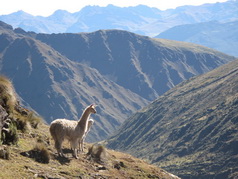
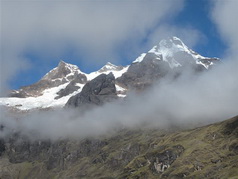
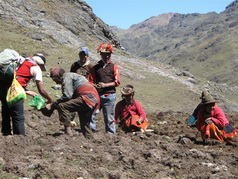
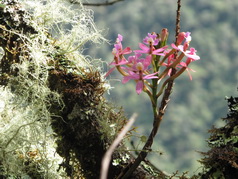

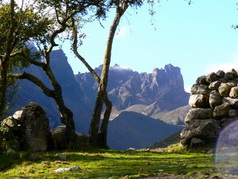




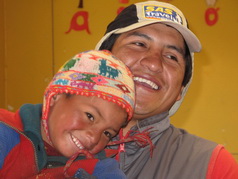

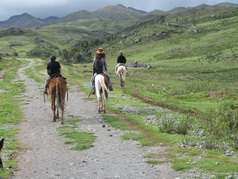
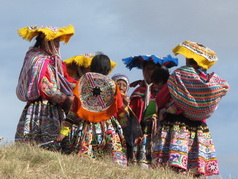
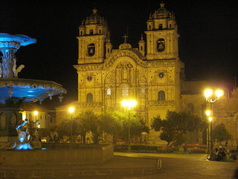

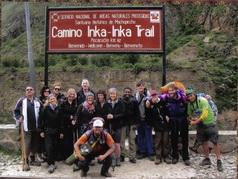
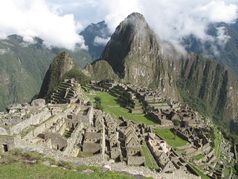
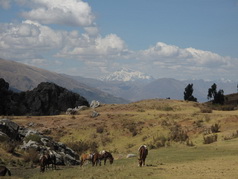
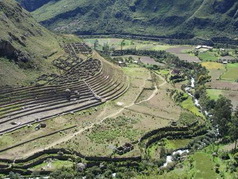
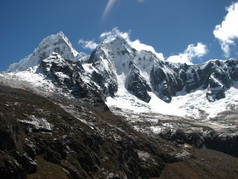
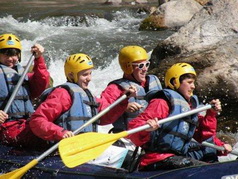
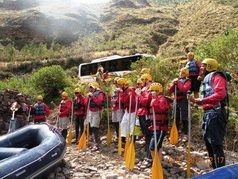
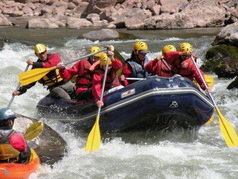
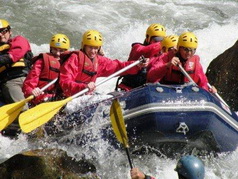
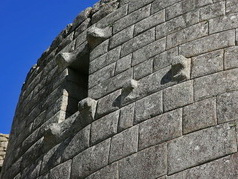

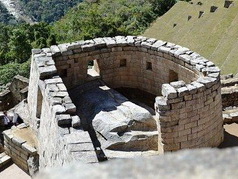
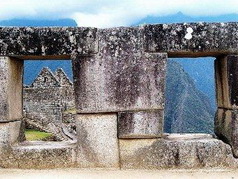
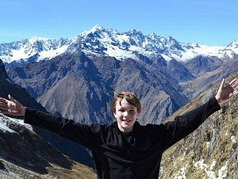
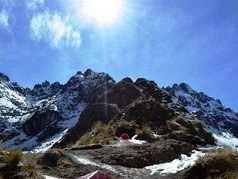

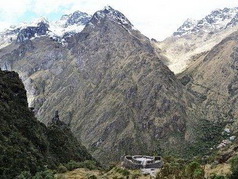

My boyfriend and I recently returned from our trip to Peru. SAS travel arranged our travels. We were there from May 10 to 17. Thank you so much for a great trip. We were in Cusco and Macchu Picchu. I would highly recommend SAS.
Katherine Stechschulte (Washington, DC - USA)